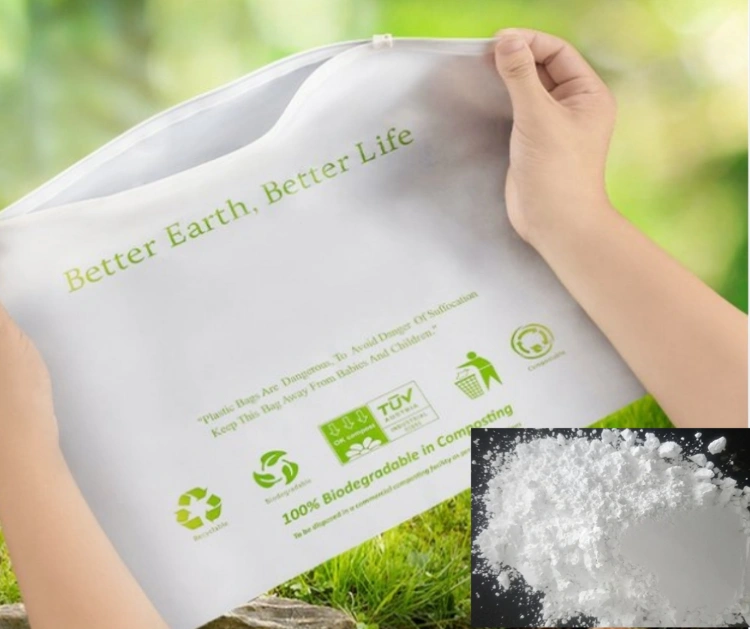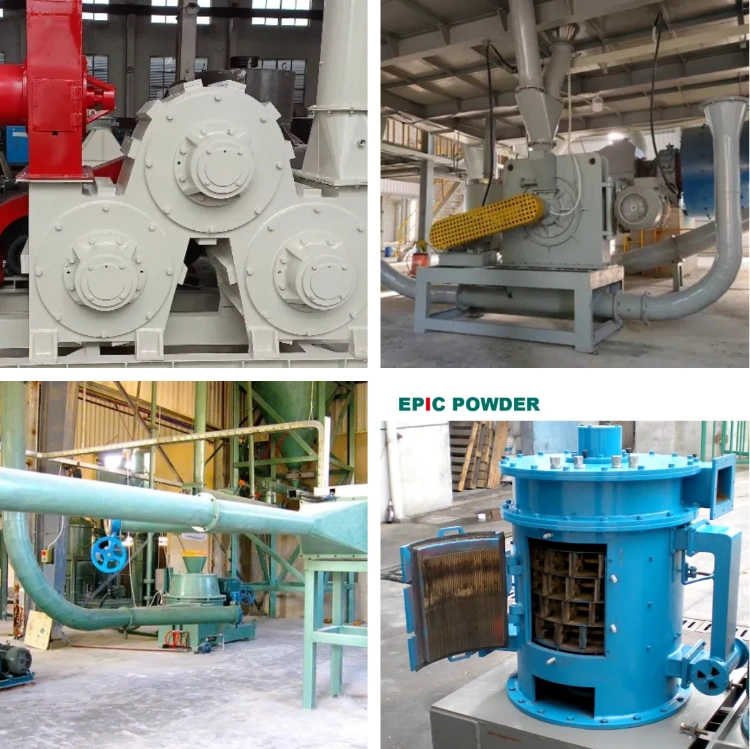Plastic products are lightweight, strong, corrosion-resistant, cost-effective, and easy to process. They are widely used in daily life. In recent years, the demand for plastic has rapidly increased. However, petroleum-based plastics do not degrade naturally. White plastic waste is causing severe environmental pollution. Therefore, developing biodegradable plastics to replace non-degradable petroleum plastics is an inevitable trend in polymer material development. Calcium carbonate in degradable plastics is becoming a key area of focus as the demand for eco-friendly materials grows. With the increasing environmental concerns surrounding plastic waste, calcium carbonate offers an effective solution. It not only enhances the mechanical properties of plastics but also helps in improving the biodegradability of plastic products. This combination of functional and environmental benefits makes calcium carbonate an essential additive in the development of sustainable, degradable plastic materials.

Current Status of Filling Technology
The price of degradable plastic resins is relatively high, limiting their widespread adoption. Degradable plastic products are mostly everyday items, hindering large-scale application. Developing cost-effective degradable plastics is key to expanding their use. Low-cost fillers like starch, calcium carbonate, and talc are used in degradable plastic modification systems. These fillers do not affect degradation performance and are environmentally disposable. High-filler content technology is crucial for the development of degradable plastic products. Calcium Carbonate plays a significant role in enhancing the properties of degradable plastics.
Study on the Performance of PBAT-based Composite Materials
Research and testing have shown that the tensile properties of calcium carbonate and PBAT blends initially increase and then decrease as the calcium carbonate content rises from 0% to 50%. However, the addition of coupling agent KH560 and compatibilizer ADR significantly improved the tensile properties of the 50% calcium carbonate-PBAT blend. At 2% coupling agent and 1% compatibilizer content, the blend’s tensile performance reached its peak.
Similarly, using PBAT as the matrix material and 50% calcium carbonate as the filler, the composite made with dual-layer coating technology showed excellent biodegradability and good mechanical performance. The surface modification of calcium carbonate with 0.5% KH560 and 0.5% titanate ester 102 enhanced the composite’s tensile strength. Compared to the single-layer coating method with unchanged additives, the dual-layer coated composite showed a significant improvement in tensile strength.
Effect of Calcium Carbonate Filling Ratio on PBAT-based Materials
Using a twin-screw extruder, calcium carbonate masterbatch and PBAT were melt-blended to form a homogeneous material. The results showed that as the calcium carbonate content increased, the elongation at break and tensile strength of PBAT decreased. When the calcium carbonate masterbatch content reached 40%, the elongation at break of PBAT decreased by 59.68%, and tensile strength decreased by 56.19%. Impact strength increased with higher calcium carbonate content. At 40% calcium carbonate masterbatch, PBAT’s impact strength rose by 46.52%. The increase in calcium carbonate content had little effect on the Vicat softening temperature of PBAT. The density of PBAT increased with the calcium carbonate content. When the content reached 40%, the density was 1.44 g/cm³, an increase of 19%.
Breakthrough in the Degradation Performance of Al-CaCO3 Modified PLA

Calcium carbonate was modified to obtain aluminum-calcium carbonate (Al-CaCO3), and its effect on PLA degradation performance was studied. The results showed that Al-CaCO3 significantly improved the degradation performance of PLA. Pure PLA degraded by only about 20% within 8 days, while adding more than 30% Al-CaCO3 allowed PLA to fully degrade within 3 days. This enhancement is beneficial for the material’s application in household and industrial composting.
Conclusion
Low-cost fillers such as calcium carbonate show great potential in the modification of degradable plastics. By optimizing filler ratios, innovating surface modification techniques, and utilizing synergistic additives, the balance between material performance and cost can be effectively achieved. In the future, continued exploration of performance control strategies at high filler levels and deeper research into the compatibility between different matrix materials and fillers will lay a solid foundation for overcoming the price barrier and achieving large-scale adoption of degradable plastic products.
Epic Powder
Epic Powder, 20+ years of work experience in the ultrafine powder industry. Actively promote the future development of ultra-fine powder, focusing on crushing,grinding,classifying and modification process of ultra-fine powder. Contact us for a free consultation and customized solutions! Our expert team is dedicated to providing high-quality products and services to maximize the value of your powder processing. Epic Powder—Your Trusted Powder Processing Expert !
